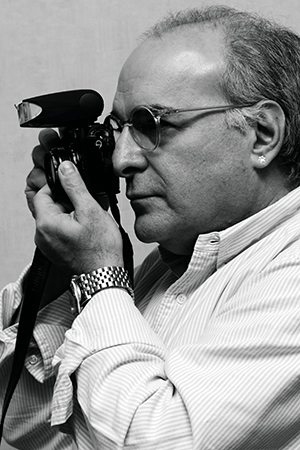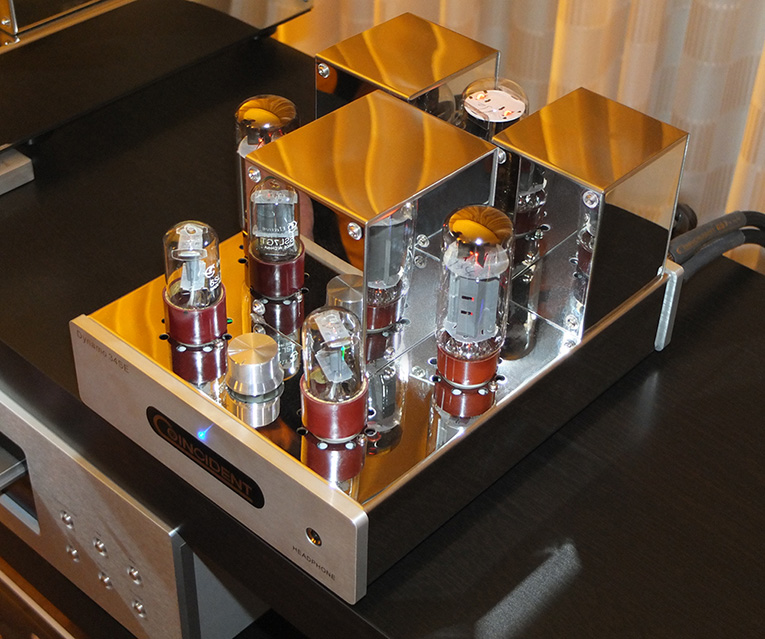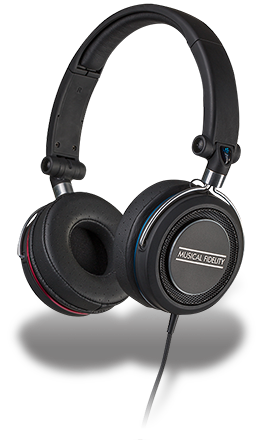
 It was EveAnna Manley, of the eponymous tube amp brand, who produced T-shirts boasting of her company's California base: "Chino, Not China," they proclaimed. Far be it for EveAnna, who lives on the Left Coast, to do something that's politically incorrect -- she places me slightly to the right of William F. Buckley -- but her point hasn't been lost on those bemoaning the disappearance of manufacturing in Europe and North America.
It was EveAnna Manley, of the eponymous tube amp brand, who produced T-shirts boasting of her company's California base: "Chino, Not China," they proclaimed. Far be it for EveAnna, who lives on the Left Coast, to do something that's politically incorrect -- she places me slightly to the right of William F. Buckley -- but her point hasn't been lost on those bemoaning the disappearance of manufacturing in Europe and North America.
We need to be grown-ups about this. Although China's low manufacturing costs cannot last forever, as wages creep up to Western levels, the fact is that, for the present, "Made in China" also means "Now more people can afford stuff." The quality issue was resolved years ago, and any major brand honest enough to admit that its products are made "offshore" will also explain that quality is not an issue if you exercise simple prudence.
Those old enough to remember the 1950s and 1960s will recall a time when "Made in Japan" stood for cheap junk. For half a century, however, it's been a mark of quality on a par with Germany and Switzerland. (Don't believe me? Check out the TechDAS Air Force One turntable, Fuji's latest lenses, Namiki Maki-e fountain pens, Grand Seiko watches, ceramic blade cutlery, or a million other manufactured items.)
China has, as quickly as Japan, moved from tacky junk to "suitable for the rest of the world" quality, such that they provide parts for Swiss watch brands who would never admit it. But that doesn't help employment in Detroit, Dagenham, or Dijon.
As if to prove that cost-effective manufacturing still exists outside of Guangzhou, Canada's Coincident has launched a fabulous all-tube integrated amp, the Dynamo 34SE, with -- get this -- a price of $1299. That's what you'd expect to pay for a tube amp made in China, not Ontario. Even more of a shock was the initial price: had you ordered one at the Rocky Mountain Audio Fest, it would have been yours for $999.
There must be a catch, you're thinking. True, the tubes are "foreign," and I suspect the sockets and terminals are imported. There's no cage, so Europe would probably deny it CE approval (which is about as meaningful as a positive criticism from Simon Cowell). But my friend and fellow half-sour-pickle maven "Yossel" Blume assures me that everything else is Canadian. Too bad it doesn't say "Eh?" when you switch it on.

It's a chunky little bugger, the 8.5" x 11" footprint and a weight of 22 pounds telling you that this is no flea-weight novelty tube amp with a lone valve. Indeed, its tube line-up is impressive: two EL34s in single-ended triode mode, delivering 8Wpc, with one 6SL7 input/driver tube per channel and an autobias circuit with a single, shared 5U4 GB rectifier tube.
That alone is a hundred bucks worth of glass. Add into the mix a mirror-finish stainless-steel chassis with .25"-thick brushed-aluminum front and back panels, and you'll see that there are no cosmetic giveaways as to its price. Inside, all is hard-wired and the socketry is what I call "mock WBT," but even there you'll find no compromise: Coincident fitted three binding posts per channel to provide a choice of 4-ohm or 8-ohm connections.
Also at the back is a single pair of gold-plated phono sockets for a line-level source, and an IEC three-pin receptacle for the AC cable. Conveniently, the unit operates at 115V/230V. The quasi-minimalism isn't just a way of keeping costs down: it defines the Dynamo's charm. On the left-hand side, there's an on/off rocker switch. At the front, an LED to indicate power on and a 1/4" headphone socket. Between the tubes at the front, a rotary volume control. That's everything.
What you're looking at, then, is a single-source, all-tube integrated amp with a headphone socket that mutes the outputs, so it's also a helluva serious headphone amplifier. If you're really short of cash but have other sources to accommodate, you can expand it with any inexpensive preamp, or dig out an old passive preamp. Feed it with a computer via an HRT or other pocket-money DAC, or insert a CD player straight in, and you have a wonderful solution for the audiophile on a budget.
No, it's not perfect, and the sample I have has an audible hum in one channel that I'll find a way to eradicate, but despite that, I'm loving it. Source of choice at present is Fidelia on the Mac, feeding NAD's astounding D 1050 DAC, which endows the Coincident with five digital inputs. And while the Dynamo manfully drives my old Spendor LS3/5As to ideal levels on my desktop, the ear-opener is its way with my headphones du jour. No, make that headphones de l'année.
 Musical Fidelity, hot on the heels of the sublime little V-90 items, has released a pair of over-the-ear headphones that I didn't expect to excel in so many ways. The MF-100 is so "right" that you know it's been fully developed even before plugging it in. The cable, for example, has its own "tidy," so you can coil the cable when it's not in use and not have to look for a cable tie. They fold flat, so -- in the pouch -- they don't fill out one's knapsack or hand luggage. They'll talk to an iPhone. They come with a spare set of cushions (leather or suede effect, offering a choice of comfort and sound characteristics) and a 3.5mm-to-1/4" adaptor.
Musical Fidelity, hot on the heels of the sublime little V-90 items, has released a pair of over-the-ear headphones that I didn't expect to excel in so many ways. The MF-100 is so "right" that you know it's been fully developed even before plugging it in. The cable, for example, has its own "tidy," so you can coil the cable when it's not in use and not have to look for a cable tie. They fold flat, so -- in the pouch -- they don't fill out one's knapsack or hand luggage. They'll talk to an iPhone. They come with a spare set of cushions (leather or suede effect, offering a choice of comfort and sound characteristics) and a 3.5mm-to-1/4" adaptor.
Light, truly comfortable, well made -- there remained two determinants to their worth: the sound and the price. As for the former, I can say only that they're smooth, detailed, open-sounding, easy to drive, and seductive to the point of salaciousness. They have joined my selection of go-to headphones, which includes far costlier Sennheisers, Grados, and B&Ws. That's serious company, my friends.
Almost forgot to tell you: they only cost UK £119. That's under $200 USD. Even if they end up costing $250 once imported, they're still worth every penny.
. . . Ken Kessler
kenk@soundstagenetwork.com






















